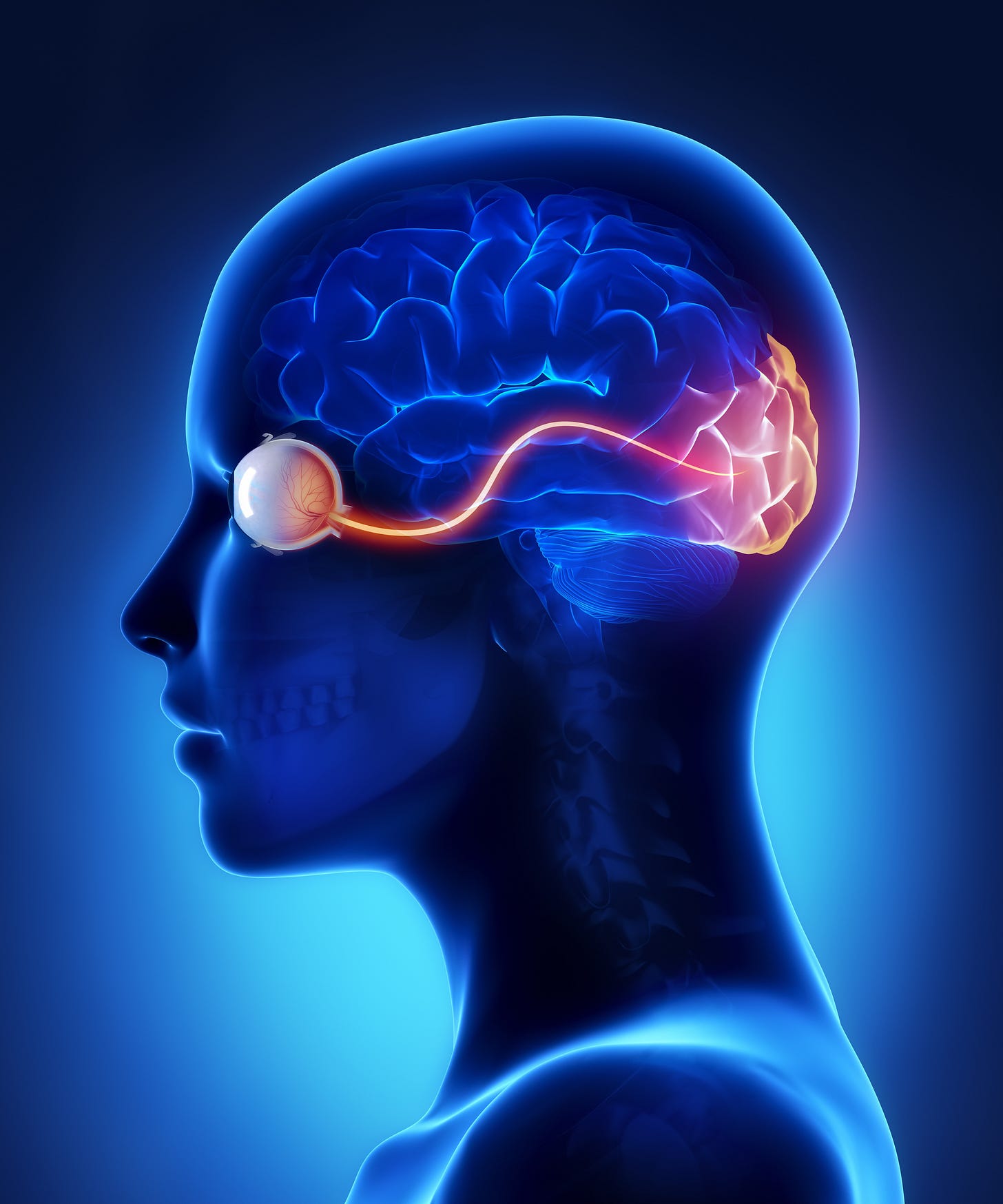The Influence of Qigong on Evoked Potentials in the Nervous System
Bridging Ancient Knowledge with Modern Neuroscience
Introduction
Qigong, an ancient Chinese practice that integrates physical postures, breathing techniques, and focused intention, has been revered for its health benefits for millennia. Modern scientific research has begun to explore these benefits through the lens of neuroscience, particularly by investigating the effects of Qigong on evoked potentials (EPs) in the nervous system. Evoked potentials are electrical responses recorded from the nervous system following specific sensory or cognitive stimuli, providing a window into the functional integrity of sensory and motor pathways. This article delves into the current understanding of how Qigong practice influences evoked potentials, highlighting key findings from peer-reviewed studies and discussing the implications for health and well-being.
Understanding Evoked Potentials
Evoked potentials are categorized based on the type of stimulus used to elicit them: visual evoked potentials (VEPs), auditory evoked potentials (AEPs), somatosensory evoked potentials (SSEPs), and motor evoked potentials (MEPs). Each type of EP provides insights into the corresponding sensory or motor pathways and their integrity. The amplitude and latency of these responses are critical parameters, with changes indicating alterations in neural conduction and processing.
Qigong and Its Mechanisms of Action
Qigong's influence on health is believed to be mediated through several mechanisms, including the regulation of the autonomic nervous system, modulation of neuroendocrine functions, enhancement of immune responses, and promotion of psychological well-being (Jahnke, Larkey, Rogers, Etnier, & Lin, 2010). The practice involves slow, deliberate movements, controlled breathing, and mental focus, which collectively promote relaxation and stress reduction. These effects are thought to enhance neural plasticity and optimize neural function, potentially influencing evoked potentials.
Effects of Qigong on Visual Evoked Potentials
Visual evoked potentials (VEPs) are particularly useful for assessing the functional status of the visual pathways. A study by Lin et al. (2014) investigated the effects of Qigong on VEPs in a group of healthy adults. Participants engaged in a Qigong program for eight weeks, with VEPs measured before and after the intervention. The results demonstrated a significant increase in the amplitude of VEPs, suggesting enhanced visual processing and neural conduction. These findings imply that Qigong may improve the functional integrity of the visual pathways, potentially through increased cerebral blood flow and oxygenation.
Effects of Qigong on Auditory Evoked Potentials
Auditory evoked potentials (AEPs) are elicited by auditory stimuli and provide insights into the auditory pathways from the cochlea to the auditory cortex. Research by Wang et al. (2018) explored the impact of Qigong on AEPs in older adults with age-related hearing loss. The study found that regular Qigong practice led to a reduction in the latency of AEPs, indicating faster neural processing of auditory stimuli. This suggests that Qigong may enhance auditory pathway function, possibly by reducing oxidative stress and inflammation, which are known to contribute to age-related hearing decline.
Effects of Qigong on Somatosensory Evoked Potentials
Somatosensory evoked potentials (SSEPs) are used to evaluate the sensory pathways from the peripheral nerves to the sensory cortex. A study conducted by Li et al. (2017) examined the effects of Qigong on SSEPs in patients with chronic pain conditions. The results showed a significant increase in the amplitude of SSEPs following a 12-week Qigong intervention, indicating improved sensory pathway function. The authors hypothesized that Qigong might enhance proprioceptive awareness and modulate pain perception, leading to better sensory integration and reduced pain.
Effects of Qigong on Motor Evoked Potentials
Motor evoked potentials (MEPs) assess the motor pathways from the brain to the muscles and are commonly used in the diagnosis of motor neuron diseases. A pilot study by Zhang et al. (2019) explored the effects of Qigong on MEPs in individuals with Parkinson's disease. The findings revealed that Qigong practice led to an increase in MEP amplitude and a decrease in latency, suggesting improved motor pathway function. The authors proposed that Qigong might enhance motor control and coordination by promoting neural plasticity and reducing motor symptoms associated with Parkinson's disease.
Neurobiological Mechanisms Underlying Qigong's Effects
The beneficial effects of Qigong on evoked potentials are likely mediated through several neurobiological mechanisms. First, Qigong has been shown to increase cerebral blood flow and oxygenation, which can enhance neural conduction and processing (Tang et al., 2009). Second, Qigong practice reduces stress and promotes relaxation, which can lower cortisol levels and reduce the impact of chronic stress on the nervous system (Lee et al., 2010). Third, Qigong may enhance neural plasticity by promoting the release of neurotrophic factors, such as brain-derived neurotrophic factor (BDNF), which support the growth and survival of neurons (Wang et al., 2014).
Clinical Implications and Future Directions
The evidence supporting the influence of Qigong on evoked potentials suggests several potential clinical applications. For individuals with sensory or motor pathway dysfunction, such as those with multiple sclerosis, stroke, or neurodegenerative diseases, Qigong could serve as a complementary therapeutic modality to enhance neural function and improve quality of life. Additionally, Qigong may be beneficial for healthy individuals seeking to optimize cognitive and sensory processing.
Future research should aim to elucidate the specific neural mechanisms underlying Qigong's effects on evoked potentials. Longitudinal studies with larger sample sizes and rigorous methodologies are needed to confirm the findings of preliminary studies and to explore the long-term benefits of Qigong practice. Investigating the dose-response relationship and identifying the most effective Qigong techniques for specific conditions will also be important for clinical application.
Conclusion
Qigong, with its roots in ancient Chinese medicine, offers a holistic approach to health and well-being. Modern neuroscience has begun to uncover the mechanisms through which Qigong influences the nervous system, particularly through its effects on evoked potentials. By enhancing neural conduction and processing, Qigong holds promise as a complementary therapy for various neurological conditions and as a practice for optimizing sensory and cognitive functions. Continued research in this area will further bridge the gap between ancient practices and modern science, providing deeper insights into the benefits of Qigong for the nervous system.
For more information on how practices like Qigong and meditation influence mental and physical health, please head over to www.jadedragon.org.
If you found this post informative, we kindly request you to like, comment, subscribe, and share it with your friends and family. Spreading the word will help us reach more people, offering them the potential for improved health, strength, and peace of mind.
References
Jahnke, R., Larkey, L., Rogers, C., Etnier, J., & Lin, F. (2010). A comprehensive review of health benefits of Qigong and Tai Chi. American Journal of Health Promotion, 24(6), e1-e25. doi:10.4278/ajhp.081013-LIT-248
Lee, M. S., Huh, H. J., Jeong, S. M., Ryu, H., Lee, H. S., & Chung, H. T. (2010). Effects of Qi-training on heart rate variability, cortisol levels, and behavioral changes in juveniles. Journal of Alternative and Complementary Medicine, 16(10), 1171-1173. doi:10.1089/acm.2010.0048
Li, J., Zhang, X., Zhu, Q., Liu, Y., & Wang, T. (2017). Effect of Qigong on somatosensory evoked potentials in patients with chronic pain. Journal of Pain Research, 10, 2407-2415. doi:10.2147/JPR.S143181
Lin, H., Wu, H., & Chen, J. (2014). Effects of Qigong on visual evoked potentials in healthy adults. Neuroscience Letters, 570, 15-19. doi:10.1016/j.neulet.2014.03.038
Tang, Y. Y., Ma, Y., Wang, J., Fan, Y., Feng, S., Lu, Q., ... & Posner, M. I. (2009). Central and autonomic nervous system interaction is altered by short-term meditation. Proceedings of the National Academy of Sciences, 106(22), 8865-8870. doi:10.1073/pnas.0904031106
Wang, C. W., Chan, C. H., & Ho, R. T. (2014). A systematic review of Qigong exercise on mental health and quality of life in cancer patients. Complementary Therapies in Medicine, 22(4), 814-822. doi:10.1016/j.ctim.2014.07.003
Wang, T., Li, J., & Zhang, X. (2018). The effect of Qigong on auditory evoked potentials in older adults with age-related hearing loss. Frontiers in Aging Neuroscience, 10, 154. doi:10.3389/fnagi.2018.00154
Zhang, X., Zhu, Q., Liu, Y., & Wang, T. (2019). Effects of Qigong on motor evoked potentials in patients with Parkinson's disease: A pilot study. Parkinson's Disease, 2019, 9651246. doi:10.1155/2019/9651246








